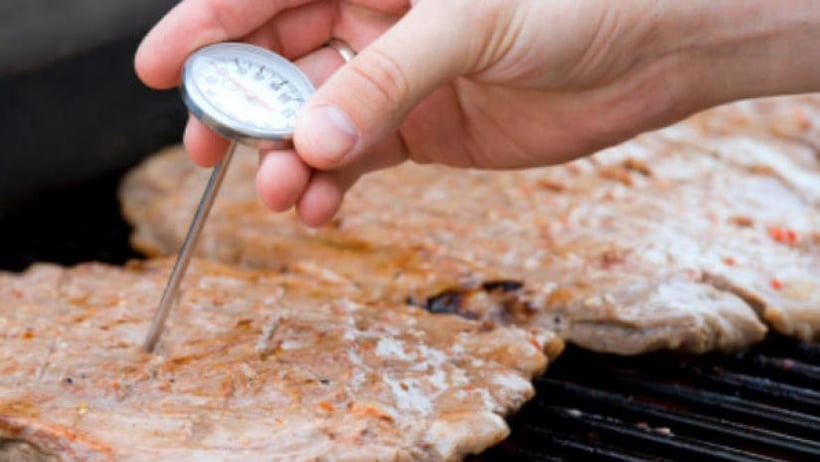
Food safety goes beyond just washing your hands when you work in the kitchen. In fact, there is one piece of equipment that should be considered an absolute must in Canadian homes – not just in commercial kitchens. This piece of equipment is a food thermometer. However, less than a quarter of Canadian residents own one.
Many cases of food poisoning come from meats that are undercooked. Meats carry bacteria in them. If they are not cooked to the proper temperature, then the bacteria that live in the meat won’t be killed. The result can very quickly result in food poisoning.
Most consumers simply try to visually gauge food while they cook, but this can cause a few different problems:
- An attempt to leave certain meats rare can lead to undercooking.
- When the food doesn’t reach a high enough temperature bacteria are not killed.
- Meats that have a coating or sauce can’t be seen visually to check the colour of the meat.
- When cooked at high temperatures, the outside of the meat may cook quickly (or even burn) while the inside of the meat is still raw or poorly cooked.
On the other side of the spectrum, some consumers may even overcook and burn foods in an attempt to avoid food poisoning, which will lead to meals that are nearly inedible.
With a food thermometer, anyone can ensure the meats are reaching the proper internal temperature, which is 74°C / 165°F. The whole piece of meat must reach this temperature, not just the outside, and a meat thermometer is the only way to check internal temperatures.
When the food reaches this temperature during cooking, bacteria are killed and food poisoning is avoided.
Meat safety is important for any Canadian, but it is all the more important for “at risk” citizens, including:
- children
- babies
- pregnant women
- elderly
- people with immune-compromising diseases
A food thermometer is not expensive. One can be purchased for less than $20, making it affordable for almost any family. Restaurants are already required to make use of food thermometers and must have the devices calibrated regularly to pass HACCP guidelines.
Unfortunately, not many households are taking the same precautions. A food thermometer can be purchased at almost any supermarket, home goods store, or restaurant supply retailer. By purchasing this one piece of equipment, you can ensure that the meats you serve are properly cooked and safe for consumption.




